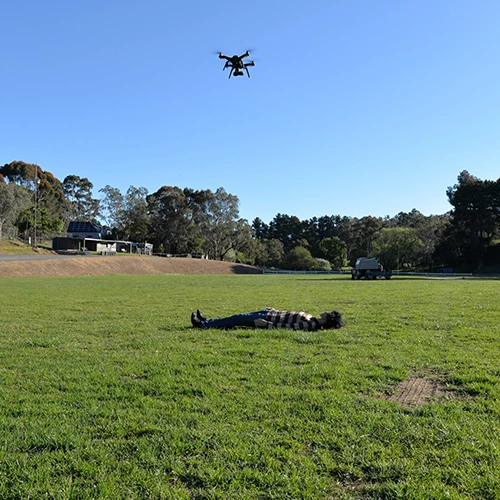Among the many proposed uses for aerial drones, one of the most compelling is the search for survivors at disaster sites. That process could soon be made much more efficient, thanks to a system that allows drone cameras to differentiate between living and dead bodies.
The technology was developed in a partnership between scientists at the University of South Australia and Iraq's Middle Technical University.
It incorporates onboard software that analyzes drone video footage of prone human bodies, detecting the tiny chest movements associated with respiration and heartbeat. That footage can be shot from a distance of 4 to 8 meters (13 to 26 ft) and the bodies can be in any position, plus only the upper torso needs to be visible.
While there are already drone systems that use thermal cameras to detect warm bodies, such setups may prove ineffective in hot climates, where there's little temperature difference between those bodies and the surrounding environment. Additionally, a live body's thermal signature may be masked by insulating winter clothing.
Additionally, the two study leaders – South Australia's Prof. Javaan Chahl and Dr. Ali Al-Naji – previously developed a system in which drone cameras could detect the changes in skin tone that occur as the heart beats. In that case, however, subjects had to be standing up in front of the aircraft, no farther than 3 meters (10 ft) away. The new system, needless to say, is much more versatile.
"This study, based on cardiopulmonary motion, is the first of its type and was performed using eight people (four of each gender) and a mannequin, all lying on the ground in different poses," says Chahl. "Videos were taken of the subjects in daylight, up to 8 metres away, and in relatively low wind conditions for one minute at a time, with the cameras successfully distinguishing between the live bodies and the mannequin."
It is now hoped that once developed further, the technology could find use in search-and-rescue operations, or in the aftermath of incidents such as earthquakes, floods, terrorist attacks or mass shootings.
A paper on the research was published this week in the journal Remote Sensing.
Source: University of South Australia





